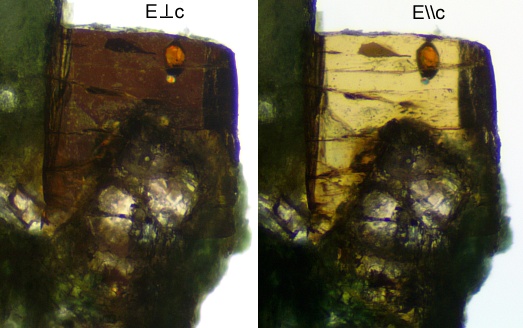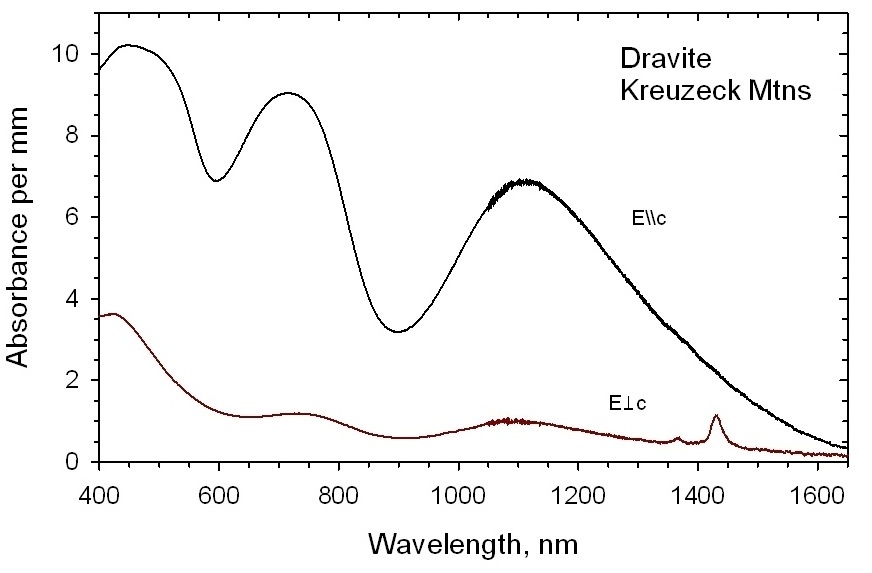
A 0.55 mm wide crystal of the Kreuzeck Mtn tourmaline in linerally polarized light
A detailed investigation was conducted on high-pressure tourmaline from an eclogite, which occurs in the Kreuzeck Mountains, Eastern Alps, Austria. Tourmaline from this locality contains the highest amount of Sr2+ (up to 0.68 wt% SrO) known to date. This tourmaline (space group R3m) exhibits lattice parameters a = 15.944(1), c = 7.202(1) Å, V = 1585.5(3) Å3. Analyses by a combination of electron microprobe, optical absorption spectroscopy and crystal structure refinement (R1 = 1.31%) result in the structural formula X(Na0.85Ca0.08Sr0.06K0.01)S1.00 Y(Mg1.68Al0.70Fe3+0.37Ti4+0.10Fe2+0.11Ca0.03Cr3+0.01)S3.00 Z(Al5.15Mg0.80Fe3+0.05)S6.00 T(Si5.82B0.10Al0.08O18) (BO3)3 V(OH)3 W[O0.45(OH)0.35F0.20]. The T site contains mainly Si and additionally small amounts of B and Al. Optical absorption spectroscopy was used to estimate the percentage of Fe2+. For this purpose the band near 1120 nm was used, because it is the band, which is best separated from other bands. We conclude that 79±2% of the total iron in this tourmaline is in the 3+ oxidation state. It can be presumed that this high-pressure tourmaline crystallized during oxidizing conditions. A rim near zone contains 0.6 wt% Cr2O3, 0.5 wt% PbO2, 0.2 wt% NiO and 0.1 wt% V2O3. Only a small F content was found by structure refinement. There is no evidence that the investigated tourmaline zones exhibit any significant vacancies at the X site. The composition of this high-pressure tourmaline is close to (an Fe3+-bearing) oxy-dravite. We discuss the possibility, that the original boron source for the tourmaline crystallization in the eclogite, the tourmaline-bearing pegmatites, were influenced by a Sr-enriched marble.

